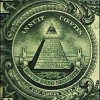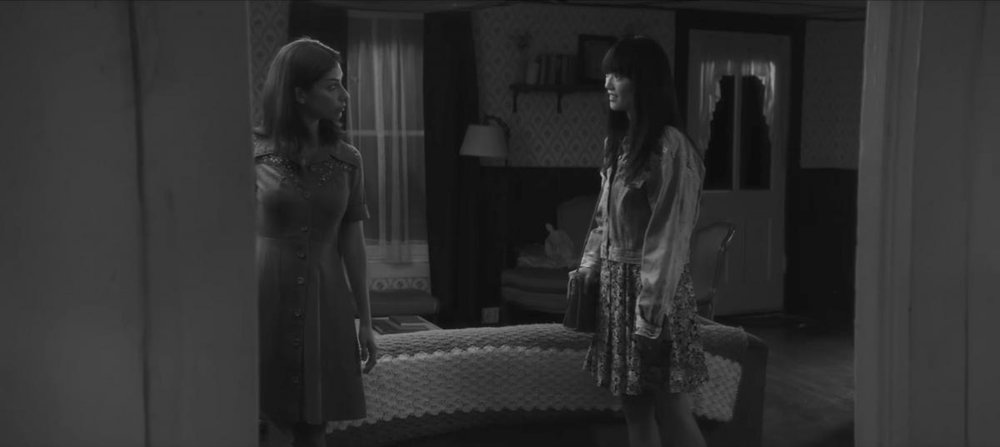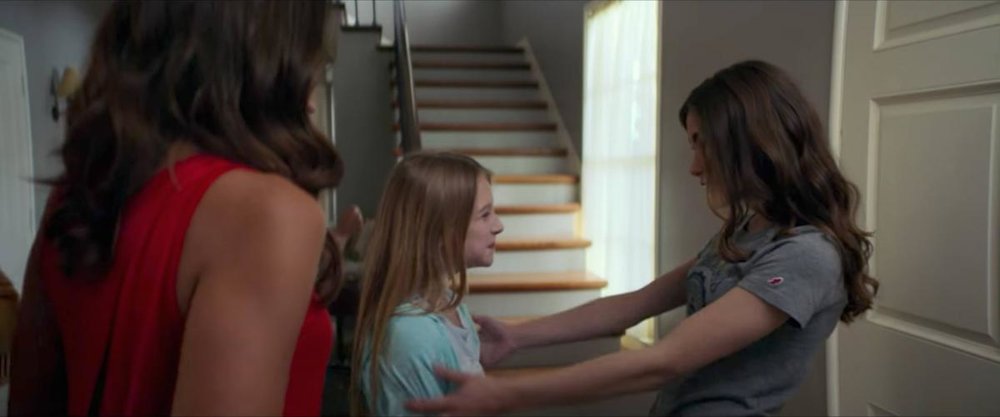-
Posts
82 -
Joined
-
Last visited
Everything posted by Reggie A Brown
-
And here is another one.
-
This is a pretty solid video about lighting a bottle.
-

Recreating "Belly" Intro Blacklight Scene
Reggie A Brown replied to Roger Alexander's topic in Lighting for Film & Video
I always imagined that lighting was done with some really strong ctb and coloring in post. Not so sure it was actual black light. Black light will pick up too many small (and probably distracting) nuisances like lint on clothing or in hair, but with gels that wouldn't be noticeable. -
Thanks for the response David. Looking that the background compression and separation seems to be similar to that of a wide angle lens, especially looking at the movies in a whole and seeing the set from a lot of different angles.
-
Hello guys, I'm pretty sure I can get an answer from one of the great cinematographers and/or DP's on this site! The screenshots below are from the movies The Eyes of My Mother and The Hatred. If you look at the outer edges (the door frames) you'll see they curve inwards (pincushion distortion) instead of outwards (barrel distortion) like most people are used to seeing; and with this pincushion distortion, it seems to make the female talent(s) look slimmer. I googled searched "lenses that give pincushion distortion" and I couldn't find any answers. Would anyone happen to know what type of lenses are being used to get this pincushion distortion? Is this the characteristics of a certain brand, and a particular model from that brand? Is it some type of anamorphic filters? Is it some other type of filter? Is this done in post? Thanks for any feedback!!
-
You guys rock! Thanks for all the valuable information thus far. I'll definitely continue to post here and read the forums on this site. I'm planning, and arranging to move to Atlanta. I read that AMC recently purchased a studio for $8 million for the walking dead tv show because they want to shoot at least another 20 seasons. And there's a lot of other productions that happening in/and around the Atl area. I'd like to network with some people in that area and if I can get my foot in the door on the walking dead I'd at least have steady work during that production. I know everyone's path is different, but how do I approach big tv show productions asking to come aboard if I don't have experience? Who do I approach and talk to? How should I began the conversation?
-
Hey Phil, thanks for the response. I live in a small town with a population of about 40,000. There's a small percentage of ppl that's interested in video, and an even smaller percentage that's interested in cinema. The ppl I've met that's interested in video are content with making videos for local musicians and businesses, and from the conversations I've had with them they're less knowledgeable than me. The ppl I've met that's interested in cinema have been all talk, no action; even when I invite them on my own shoots. And some of the ppl that have actually shown up to help didn't know what gaf tape was or how to use a c stand. Some of the local university students told me they've learned more from me by being on my set for a few hours than what they've learned in school all together. So that's my dilemma. I'm interested in making movies for tv, shooting tv shows, and eventually movies that'll get theatrical releases. I plan on moving to a big metropolitan area in the future where I'll be around more like minds, but I'm just looking for guidance now so when I make that leap I'll do it with confidence and hopefully more connections in the industry.
-
Hello all. This website is filled with phenomenal information, a lot more information than what people learn in film school. Shout out to David Mullen ASC, Phil Rhodes, Stuart Brereton, Adrian Sierkowski, Guy Holt, Miguel Angel, and all the other incredible ppl in the film industry that offer valuable input on these forums. This question may be far fetched, but I won't know an answer unless I ask. Are there any members that are willing to be a personal mentor? Someone that I can personally call, text, email that'll teach me and help me advance throughout my career? Out of all the jobs I've worked I've always had a mentor; now that I'm taking on having a long career as a cinematographer, I'd like to have a mentor (or several) as I work my way through the industry. My goal is to become a camera operator. If anyone out there is willing to be my mentor, please don't hesitate to send me a private message. I know I may be asking for a lot, but I also believe I'll never catch a fish if I don't ever cast a line. Thanks!
-

Spectra Cine IV plus spot meter v Sekonic 858-D
Reggie A Brown replied to Stephen Perera's topic in Lighting for Film & Video
The boot up time is about 2 seconds. If the meter sit for a couple of days without being powered on, then the boot up time is about 3-4 seconds when its first powered on, then it's back to about 2 seconds after that. I don't think 2 seconds is that long, but I've read many ppl say that that's too long for them. I figure if I know I need to get a meter reading, if I pull it out and turn it on as I'm walking to the location I need to meter, the meter will be ready to go when I make it there. I haven't had any issues with that logic so far. It's a very nice meter, but I don't have anything to compare it to since its my first meter.- 4 replies
-
- spectra
- light meter
-
(and 1 more)
Tagged with:
-

Best light for catch-lights
Reggie A Brown replied to Alexander Sutton Hough's topic in Lighting for Film & Video
If the subject is still you can use a dedo light with barn doors are a snoot to point light directly into the eyes only. Other than that I've always had difficulties adding a catch light without messing with the over all lighting on the face. I agree with Adrian, the catch light is usually from a larger source that's used the light the face or scene anyway.- 15 replies
-
- catch light
- catchlight
-
(and 1 more)
Tagged with:
-

Sekonic Speedmaster L-858D
Reggie A Brown replied to Kenny Keeler's topic in Lighting for Film & Video
I use the L858d. I like it. You're aware that the size of the spot is based on the distance from the subject/surface, so I don't know what your real question is. The spot meter shows the light reflected off a surface, so depending on the subject/surface I'm not sure I'd want to use a spot meter cause you'll get a different reading from different areas, even with even lighting. Example: If you have a 6'x6' black and white picture on the wall, the black paint on that picture will show a different reading compared to the white paint on that same picture with the same amount of light illumination hitting the whole picture evenly. The black paint will soak up more light, while the white will reflect it more. -
You'll never know that the audience is thinking unless you ask them. Contrary to popular belief, the larger majority of people going to the movies aren't pixel peepers. The things that cinematographers and photographers look at are usually over looked by people who's not into those things. Most people don't see moire or aliasing for example.
-
You'll never know that the audience is thinking unless you ask them. Contrary to popular belief, the larger majority of people going to the movies aren't pixel peepers. The things that cinematographers and photographers look at are usually over looked by people who's not into those things. Most people don't see moire or aliasing for example.
-

Light meter with digital?
Reggie A Brown replied to Michael Maier's topic in Lighting for Film & Video
Thanks David! I understand the FC from the birthday cake with 1 candle in it at 1 foot example that is often used. But it's always been a struggle for me to wrap my head FCs when using tungsten or LED lights at different wattages. Oh, and btw I just purchased the 858D over the weekend so I can learn more about light levels, ratios, and actually see the numbers (and FCs) that correspond with said light levels and ratios. -

Light meter with digital?
Reggie A Brown replied to Michael Maier's topic in Lighting for Film & Video
"To figure out how many FC you need for exposure, all you need to know is that it takes 100 FC to get an exposure of 2.8 with an ISO 100 film with a 180 degree shutter at 24 FPS (1/50th of a second shutter speed.)" With all those setting in camera, how far away from the main light source do you have to be to get 100 FC from it? 1 foot, 2 feet, 10 feet? And what wattage light can this calculation be based off of? -

rotate the camera 180 degrees on a tripod method?
Reggie A Brown replied to David Schuurman's topic in Grip & Rigging
Very creative! Thanks for sharing -
Thanks guys. I think I may make a d.i.y scrim box.
-
Hello All I'm studying and learning more about lighting and grip equipment. I just recently purchased my first scrim. I purchased the Matthews single 24x36. It's really thin. Like really really thin! And I'm afraid of ripping and/or tearing it if it's not stored properly. So my questions are: how do you guys store them and go about handling them when traveling? Is there a scrim case? And how durable is the fabric on scrims, can they take any abuse? Thanks in advance to who ever may answer these questions!
-

Kendrick Lamar's camera movement
Reggie A Brown replied to Brandon Wong's topic in General Discussion
This guy tries to explain it. -
Guy Holt thanks for such a good write up!
-
And Mark, I downloaded the user manual for the 858 and it says there's a 1 second boot up time.
-
Any ideas why the price point of the 858 would be lower than the 758? It's newer technology and supposedly more sophisticated, but why the lower cost? Sorry I'm asking all these questions, but I'm not familiar with light meters and I don't understand or know where they cut cost so they can charge a lower price.
-
Thanks for the feedback guys! I'm considering the L-758 cine or the new L-858d. People buy light meters and keep them for 10+ years, so my only issue is how well will the touch-screen on the 858 hold up.? It seems to be a more light sensitive meter and was designed with digital cinema cameras in mind, and it's a little cheaper. But will it hold up for the long haul? Or what if it's accidentally dropped, will the screen crack easily? Will the screen touch sensitivity die out over time? These are the questions I'm asking myself. When I buy a light meter I want one that I can learn the ins and outs of, and it becomes second nature for me to use. And I want one that I can get 17 years out of like Satsuki Murashige. Sekonic just release the promo video for the 585d the other day and it looks promising...But long term use is what's questionable. Do you guys think it will hold up for the long haul? And the new video is below.
-
How many of you guys actually use light meters? And if you don't mind, can you share with us what light meter you use and why you chose that specific light meter? I'm interested in purchasing one so I can keep my lighting ratios consistent on my wide, mid and close up shots. I'm considering the sekonic L-758 cine. Is there a different one I should consider? Should I consider purchasing a light meter at all? Thanks for any feedback this post may get.
-
One of the commenters said you'll invest in more and more lights, I agree with that, and disagree at the same time. You can become a master of using one light and using bounces to fill in as additional lights. Check out this video where this master dp discuss his one light techniques.





